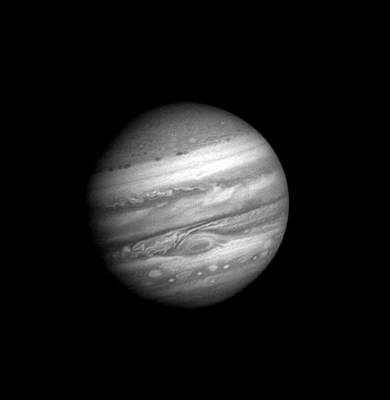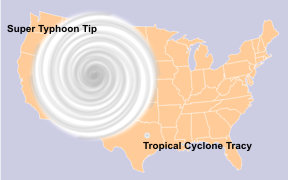NotTheGuyYouKill
Member
Well, potentially.

http://www.theweathernetwork.com/ne...ailin-begins-to-lash-indias-east-coast/14359/
http://www.cbc.ca/news/world/india-s-cyclone-phailin-pounds-coast-5-killed-1.2021411
A storm the size of FRANCE.

http://www.theweathernetwork.com/ne...ailin-begins-to-lash-indias-east-coast/14359/
The enormous Cyclone Phailin made landfall in the east Indian city of Gopalpur late Saturday morning, with the outer edge of its eye - 16 km across at its widest on Friday - coming ashore at a little over 6 p.m. local time and 8:30 a.m. Eastern Time, although the centre of the eye was not expected to reach land until the late morning.
At least three deaths were reported ahead of the storm, and trees and power lines were reported town across a huge swath of the coast.
Phailin is currently the largest storm in the world, and may be the largest ever recorded on Earth.
The huge storm sprawls across the Bay of Bengal, and is roughly the size of France. It boasts sustained winds of 241 km/h, with gusts of almost 300 km/h.
Strong winds and heavy rains ahead of the storm pounded communities up and down the coastlines of four states, together comprising a population of more than 250 million people.
Storm surge of up to nine metres is possible, although Indian officials say it would only max out at around three metres.
Residents were making storm preparations with the 1999 Orissa cyclone in mind. The death toll from that storm was more than 10,000, although officials in the region say the country is better prepared this time.
The Associated Press reports around 600,000 people have been moved to higher ground.
Still, major power and communications disruptions are expected, along with severe crop damage.
The storm's sheer size and intensity have prompted comparisons to Katrina, although forecasters make significant distinctions between hurricanes, typhoons and cyclones.
With files from the Associated Press.
CYCLONE PHAILIN - QUICK FACTS
At its strongest point, hurricane Katrina had a pressure of 902 mb and winds gusting to 280 km/h. Cyclone Phailin had a pressure of 910 mb with winds gusting to 315 km/h on Friday.
The storm is on track to becoming the strongest cyclone the Indian ocean/Bay of Bengal has ever recorded.
The last huge cyclone in this area was in 1999. It killed 10,000 people and had a storm surge of 8 metres.
Most coastlines are under 5 metres above sea level. If storm surge was 8 metres in 1999, it's highly likely that Phailin will produce higher surge.
Offshore, Phailin is already producing waves that are 18.5 metres high.
The average cyclone has an eye diameter is between 4 - 5 km. Phailin has an eye diameter of 16 km.
http://www.cbc.ca/news/world/india-s-cyclone-phailin-pounds-coast-5-killed-1.2021411
A fierce cyclone tore into India's east coast on Saturday night, killing at least five people and forcing about half a million into overcrowded shelters as the storm threatened to cut a swathe of devastation through farmland and fishing hamlets.
Cyclone Phailin was expected to remain a "very severe cyclonic storm" packing winds of up to 210 kph into the early hours of Sunday before steadily weakening as it moves inland in the states of Odisha and Andhra Pradesh.
Phailin's rain and wind could affect 12 million people, weather and disaster management officials said. Some forecasts said the storm lost some of its strength before reaching the coast, but it remained India's strongest since a typhoon killed 10,000 people in the same region 14 years ago.
Heavy rain lashed fishing villages and wind uprooted trees. Satellite images showed a vast spiral shaped storm that filled most of the Bay of Bengal. A U.S. Navy forecast said Phailin's gusts could reach 296 kph.
Jagdesh Dasari, a local leader in the fishing village of Mogadhalupadu near where the storm struck said police had to order villagers to leave mud and thatch huts for a school building as night fell. Similar hold-outs were reported along the poor coast, where people were afraid of losing belongings.
"Many people refused to move, had to be convinced, and at times the police had to forcefully move them to safe places," Home Minister Sushilkumar Shinde said.
In the first reported deaths, four people were killed by falling trees, while another died when the walls of her mud house collapsed. Electricity went out in several towns, including Odisha's capital Bhubaneswar.
Waves crash onto the shore at a fishing harbour in Visakhapatnam district in the southern Indian state of Andhra Pradesh. (R. Narendra/Reuters)
"We are fortunate that we are here ... we saved our lives," said Narayan Haldar, huddled with 1,300 people in an Odisha fishing village. He complained the government had not provided food. Some shelters were in dilapidated condition and TV images showed crowds standing in the rain outside one packed building.
Large waves pounded beaches and villagers told a television station that surging sea levels has pushed water several hundred feet inland in low-lying areas.
Higher sea levels caused by cyclones, known as storm surges, can cause the most destruction. Phailin was forecast to drive sea levels 11 feet (3.5 meters) higher at its peak.
Makeshift shelters
India's disaster preparations have improved significantly since the 1999 storm and aid workers praised precautions for Phailin such as early warnings, stocking of rations and evacuations.
Some 550,000 people were crammed into makeshift shelters including schools and temples, in what the National Disaster Management Authority, described as one of India's largest evacuations.
Even before landfall, coconut trees in villages along the coast were bent and broken in the gusting wind. Electrical poles were brought down and roads were littered with debris.
'I have a small child, so I thought, how will I leave?'
- Achamma, holding on to her child
Terrified children clung to their mothers as they sought shelter. Most towns along the coast were deserted but some people were still trying to flee in buses and three-wheel auto-rickshaws just hours before the storm struck.
The size of the storm made extensive damage to property more likely, Shashidhar Reddy, vice chairman of the National Disaster Management Authority told reporters in New Delhi. "Our priority is to minimize loss of life," he said.
The weather department warned of extensive damage to mud houses, disruption of power and communication lines, and the flooding of railways and roads. Flying debris is another threat.
Now a Category 4
London-based Tropical Storm Risk downgraded the storm to Category 4 - still the second strongest such rating. The U.S. Navy's weather service said wind at sea was gusting at 296 kph.
Canadian government warning
'Super Cyclonic Storm Phailin is expected to make landfall on the coast of the state of Odisha as a Category 5 storm on October 12, 2013, and may also affect neighbouring states along India's eastern coast. Storms of this magnitude can result in significant loss of life and extensive damage to infrastructure, and can hamper the provision of essential services. Keep informed of regional weather forecasts, avoid disaster areas and follow the advice of local authorities. Consult our Typhoons and Monsoons page for more information.'
"A lot has been learnt since 1999 and my guess is that while there could be extensive damage to property and crops, the death toll will be much less," said G. Padmanabhan, emergency analyst at the U.N. Development Programme.
But despite all the warnings, some people refused to leave.
"I have a small child, so I thought, how will I leave?" asked Achamma, 25, as she held her boy in Donkuru, a fishing village in Andhra Pradesh, as waves crashed on the beach.
The port of Paradip halted cargo operations on Friday. All vessels were ordered to leave the port, which handles coal, crude oil and iron ore. An oil tanker holding about 2 million barrels of oil, worth $220 million, was also moved, an oil company source said.
But the storm was not expected to hit India's largest gas field, the D6 natural gas block in the Cauvery Basin further down the east coast, field operator Reliance Industries said.
A storm the size of FRANCE.








